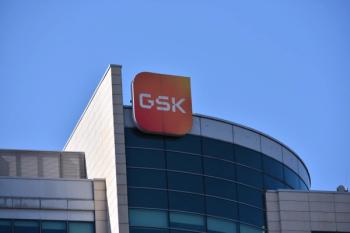
- BioPharm International-10-01-2007
- Volume 20
- Issue 10
Contract Services Enabled the Biopharmaceutical Boom
There wasn't much of a contract services industry when BioPharm International began publishing 20 years ago. Today's big names in biomanufacturing, including Lonza, Boehringer-Ingelheim, and Avecia, had not yet entered the business.
There wasn't much of a contract services industry when BioPharm International began publishing 20 years ago. Today's big names in biomanufacturing, including Lonza, Boehringer-Ingelheim, and Avecia, had not yet entered the business. On the fill-and-finish side, only Ben Venue Laboratories and Vetter were focused on contract work. Options for development services were very limited: Microbiological Associates (now known as BioReliance) and AAIPharma were among the few companies offering analytical and formulation support. On the clinical research side, firms such as Quintiles and PPD were just a few years old. Revenues of the contract services industry probably didn't amount to more than $100 million.
Jim Miller
The story is very different today. Contract services for biopharmaceutical companies, including preclinical and clinical development, and manufacturing of active ingredients (APIs) and dosage forms, is a global industry with revenues approaching $50 billion. At least five companies generate annual revenues of $1 billion or more, and several dozen now top the $100 million mark. Publicly traded contract research and manufacturing companies (CROs and CMOs) carry high valuations and, at least until this summer's turmoil in the credit markets, services companies commanded high multiples from private equity investors.
The rapid growth of contract services for biopharmaceutical companies can be traced back to the mid-1990s, when several favorable developments converged:
- The earliest biopharmaceutical products, including human growth hormones and epoetin, had achieved commercial success. Monoclonal antibodies, after failing to live up to their initial hype, were showing promise thanks to the development of humanized forms.
- Venture capital was available in unprecedented amounts. The boom in information technology was attracting large amounts of capital into venture funds, and thanks to these successes, a significant share of that money found its way into early stage biopharmaceutical companies. Rising valuations for all stocks, including biopharmaceutical companies and a strong market for initial public offerings (IPOs), made investments in early stage biopharma companies especially attractive.
- A robust pipeline of small-molecule candidates was driving the growth of the CRO and CMO sectors. Anxious to continue their mid-decade winning streak of new products launches, major pharmaceutical companies aggressively supplemented their internal capabilities by contracting with CROs. For a while, it seemed that anyone with a telephone and an e-mail address could open a clinical research organization. A number of CROs and CMOs went public during this period, including Quintiles, PPD, Covance, BioReliance, and AAIPharma.
FILL-AND-FINISH BLOSSOMS
The second half of the 1990s and early years of this decade saw the build-up of the parenteral manufacturing sector, which has been critical to the growth of the biopharmaceutical business because most biopharmaceuticals are delivered by injection or infusion. PharmSource estimates that the parenteral segment of the contract dose manufacturing industry has grown to nearly $3 billion in revenues.
Acquisition was initially the major avenue for build-up of the parenteral CMOs:
- Patheon bought parenteral manufacturing facilities in the UK and Italy from Roche;
- Catalytica bought the Wellcome facility in Greenville, NC, from GlaxoWellcome, then sold it a few years later to DSM;
- Baxter entered the industry by buying the facility built by Cook Industries in Bloomington, IN;
- Cardinal Health (now Catalent) acquired SP Pharmaceuticals in Albuquerque, NM (a former Pharmacia facility), and Federa in Belgium;
- Private equity investors acquired a Bayer facility in Spokane, WA, and created Hollister-Stier.
Investment activity didn't stop at acquisition. The acquirers, along with other large players, including Hospira (then part of Abbott), Ben Venue (acquired by Boehringer-Ingelheim), and Vetter, poured hundreds of millions of dollars into capacity expansions, especially for lyophilization and prefilled syringes.
Combined with the expansion in cell culture and fermentation capacity (see the article by Tom Ransohoff in this issue), the expansion in parenteral manufacturing capacity has offered biopharmaceutical companies the opportunity to focus their cash resources on product development rather than investing them into expensive manufacturing assets. This has reduced the risk of biopharmaceutical product development considerably, and increased the industry's attractiveness for venture capital investors.
NEW FOCUS ON EARLY DEVELOPMENT
In recent years, the contract services industry has benefitted from an unprecedented growth in the product development pipeline. Over the past five years, the number of candidates in Phase 1 has grown by 50% and the number of Phase 2 candidates has jumped 25%. This has created new business opportunities for contract services providers. In a recent survey conducted by PharmSource, BioPharm International, and its sister publication Pharmaceutical Technology, most contract service providers report that they are experiencing double-digit growth, which is expected to continue.
Early development services—including preclinical toxicology, clinical pharmacology, analytical chemistry, formulation development, and the manufacture of clinical trial materials—have benefitted the most from this trend. Rather than looking ahead to commercialization, young biopharmaceutical companies have focused on demonstrating as soon as possible that the safety and efficacy profile of a drug candidate is attractive enough to justify late clinical development. That demonstration of safety and efficacy, referred to as proof of concept (POC), is usually made after a small Phase 2 study.
Proof of concept has become a critical financial milestone for early stage companies. Products that successfully demonstrate POC are prime candidates for in-licensing by major pharmaceutical companies and private investments or IPOs. Venture capitalists have adjusted their financial models to target POC as their most likely strategy for realizing the return on their investment.
The demand for early development services from early stage companies has resurrected the integrated services model among service providers. The integrated services model, also known as the "one-stop shop," offers the client a single source for services it might otherwise have to contract from multiple vendors. Typical combinations include packaging preclinical and Phase 1 testing together, and combining formulation development, analytical services, clinical supplies manufacturing, and clinical packaging into a single offering. The purported benefit to the client is faster progression to proof of concept and lower costs of procuring and managing the services. CROs offering the "one-stop shop" model are looking to increase their share of the market by combining a number of relatively small expenditures into a single large engagement.
LOOKING AHEAD
From a minimal presence 20 years ago, the contract services industry has grown to where it offers a substantial base of suppliers to meet all of a biopharmaceutical company's development and commercial requirements. The PharmSource Advantage contractor database lists 100 contract parenteral manufacturers, 50 formulation development CROs, more than 175 contract analytical laboratories and over 100 biomanufacturers.
While simple supply-and-demand has driven the industry's growth to date, we see new factors pushing the industry in the next 20 years. The main factor will be innovation in technologies and business models. Contractors have led the way in addressing emerging industry needs like cold chain management, electronic data capture, and manufacturing process improvement. CMOs have anticipated emerging market needs for technologies like prefilled syringes and high containment manufacturing. CMOs and CROs are partnering with their clients to serve the expanding base of R&D and manufacturing activity in Asia, especially India, China, and Singapore.
We expect to see the biopharmaceutical industry take advantage of the service supply base available to it. More outsourcing will lead to new business models, including longer-term strategic relationships and risk-sharing arrangements that will enable biopharmaceutical companies to become more virtual and increase the number of development products. In the future, we expect the industry to be dominated by a small number of large, well-financed players.
Jim Miller is the president of PharmSource Information Services Inc., and the publisher of Bio/Pharmaceutical Outsourcing Report, 703.383.4903,
Articles in this issue
over 18 years ago
Protein Therapeutics and the Regulation of Quality: A Brief Historyover 18 years ago
Process Chromatography: Five Decades of Innovationover 18 years ago
Biotechnology: Past, Present, and Futureover 18 years ago
Back to the Futureover 18 years ago
The Evolution of Protein Expression and Cell Cultureover 18 years ago
Biotech Manufacturing Grows Upover 18 years ago
FDA Modernizes Biotech Regulation Over The Past 20 Yearsover 18 years ago
Glycosylation and the Demands of Antibody Engineeringover 18 years ago
What Comes NextNewsletter
Stay at the forefront of biopharmaceutical innovation—subscribe to BioPharm International for expert insights on drug development, manufacturing, compliance, and more.




